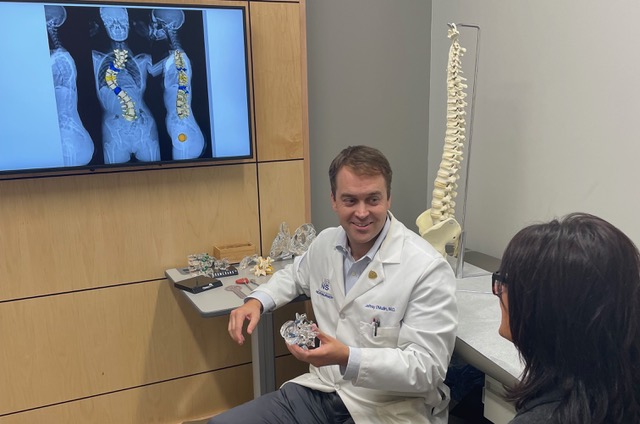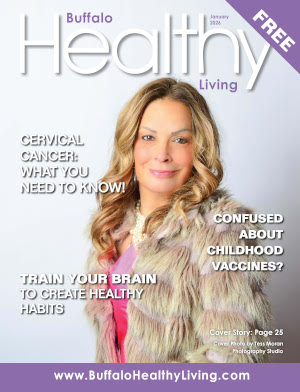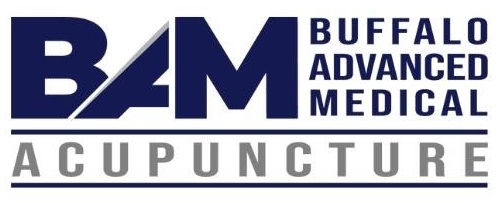Scoliosis: New Technology and Treatments

the condition affects both children and adults
By Annette Pinder
Jeffrey Mullin MD, MBA of UB Neurosurgery (UBNS) is one of the few surgeons in Western New York who treats scoliosis, an abnormal curvature of the spine. “While the normal spine includes a curve at the top of the shoulder and at the lower back, side to side curvatures in an “S” or “C” shape may indicate scoliosis, which affects both children and adults,” explains Dr. Mullin.
Scoliosis is typically diagnosed within the first seven years of a child’s life due to idiopathic (unknown) causes, and can be broken down by infant (0 to 3 years); juvenile (4 to 10 years); adolescent (11 to 18 years); and adult (18+ years), with adolescent scoliosis being the most common. Being female with a family history of scoliosis is also common.
“Known causes of scoliosis include congenital spine deformities and neurological abnormalities that affect the muscles of the spine that can be structural or nonstructural. Structural scoliosis is caused by disease, injury, or birth defect, and is permanent, while nonstructural scoliosis is a temporary curve that can be fixed,” says Dr. Mullin. Common symptoms include:
- One shoulder blade being higher than the other
- One shoulder blade sticking out more than the other
- Uneven hips
- A rotating spine
- Breathing problems due to reduced chest area for the lungs to expand
- Back pain
Diagnosing scoliosis requires a physical exam, followed by possible imaging, such as an X-ray, MRI, CT, or bone scan. Treatment options include bracing or surgery, based on the degree of spinal curvature, age, type of scoliosis, and whether continued growth is likely.
Adults diagnosed with scoliosis can be separated into two distinct groups — adult idiopathic scoliosis which existed in childhood, and adult degenerative scoliosis, which commonly occurs in individuals ages 40 and older, due to degenerative changes in spinal discs. Many of these patients experience neck, back, leg, and nerve pain problems.
“They also often express an inability to stand straight; feeling like they are leaning or drooping over or off-balance; and feeling like they have shrunk an inch or two and are no longer able to reach the top shelf,” says Dr. Mullin.
“Fortunately, new advanced technology and treatments make it possible to definitively diagnose and better treat scoliosis,” says Dr. Mullin. He is particularly excited about UBNS’ new EOS imaging low-dose, weight-bearing X-ray machine, which simultaneously takes full-body, side view images of a patient’s skeletal system while they are sitting or standing. “Using EOS, two- and three-dimensional low-dose imaging assists doctors with diagnosing and treating medical conditions of the spine, hips, and knees,” explains Dr. Mullin.
Dr. Mullin suggests that individuals experiencing any of the symptoms discussed in this article, consider having an EOS X-ray to determine if scoliosis is the cause. While scoliosis bracing is typically recommended for younger patients, the most common recommended treatment for adults is spinal surgery.
Dr. Jeffrey Mullin is an Assistant UB Professor and neurosurgeon at UBNS focusing on scoliosis, spinal instability and deformity; cervical, thoracic and lumbar spine disorders; and spinal tumor and infection in children and adults. Call 716-218-1000 to make an appointment and visit https://www.ubns.com/physicians/dr-jeffrey-p-mullin.









